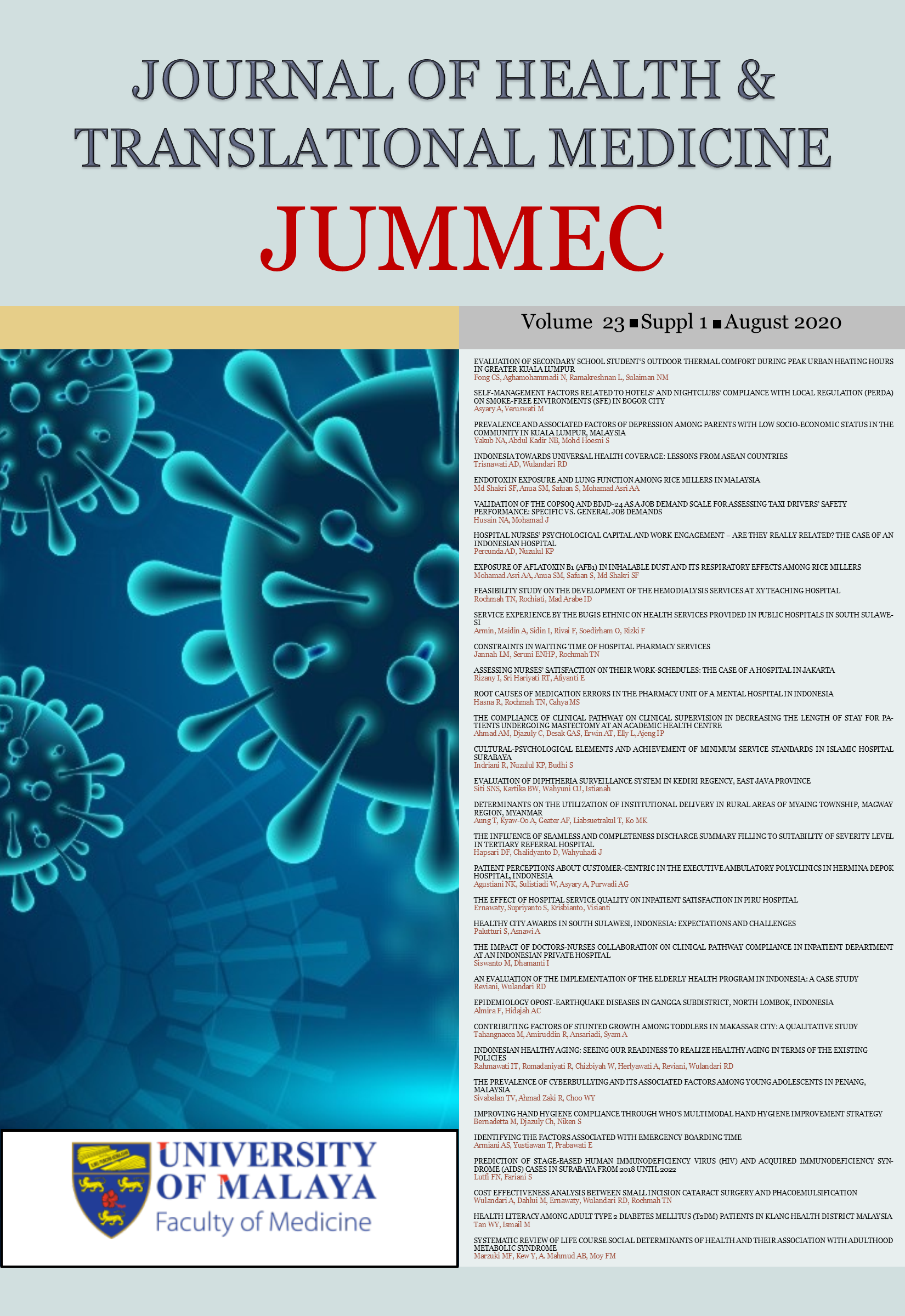ROOT CAUSES OF MEDICATION ERRORS IN THE PHARMACY UNIT OF A MENTAL HOSPITAL IN INDONESIA
Keywords:
Dispensing stage, Medication error, Problem Solving AnalysisAbstract
Background: In the period 2016-2017, incidents of medication error happening at the dispensing stage was 66% of the overall patients’ safety incidents in the Pharmacy Unit of Hospital X. Evidently, medication errors can be prevented by taking appropriate actions.
Objective: This study aims to minimize medication error at the dispensing stage by applying the Problem Solving Cycle as a research tool.
Methods: The research design is based on action research because the researcher intervened with the stages of the Problem Solving Cycle of the Pharmacy Unit of Hospital X. This research uses the 5 Whys Method to examine the root cause of the problem. Each problem was explored objectively before an alternative solution can be determined. Identification of the medication error incidents at the dispensing stage was based on six indicators.
Results: Patient safety is paramount in any hospital but the overall report of medication error incidents occurring at the Pharmacy Unit of Hospital X between June 2017-January 2018was 89 incidents. At the dispensing stage alone, there was a total of 22 incidents. A total of 73% of these incidents were reported according to the reporting time procedure, <48 hours while the highest number of medication errors involved the wrong medicine (40%), and labels on drug (27%). All were attributed to the LASA (Look Alike Sound Alike) medications.
Conclusion: The root analysis of the medication error incidents at the dispensing stage used the 5 Whys method. Focus was given to policies, SOP (Standard Operating Procedures), monitoring and evaluation, supervision, service flow, communication between staff, and communication between staff and patients. A total of 16 root problems manifested.
Downloads
Downloads
Published
Issue
Section
License
All authors agree that the article, if editorially accepted for publication, shall be licensed under the Creative Commons Attribution License 4.0 to allow others to freely access, copy and use research provided the author is correctly attributed, unless otherwise stated. All articles are available online without charge or other barriers to access. However, anyone wishing to reproduce large quantities of an article (250+) should inform the publisher. Any opinion expressed in the articles are those of the authors and do not reflect that of the University of Malaya, 50603 Kuala Lumpur, Malaysia.


